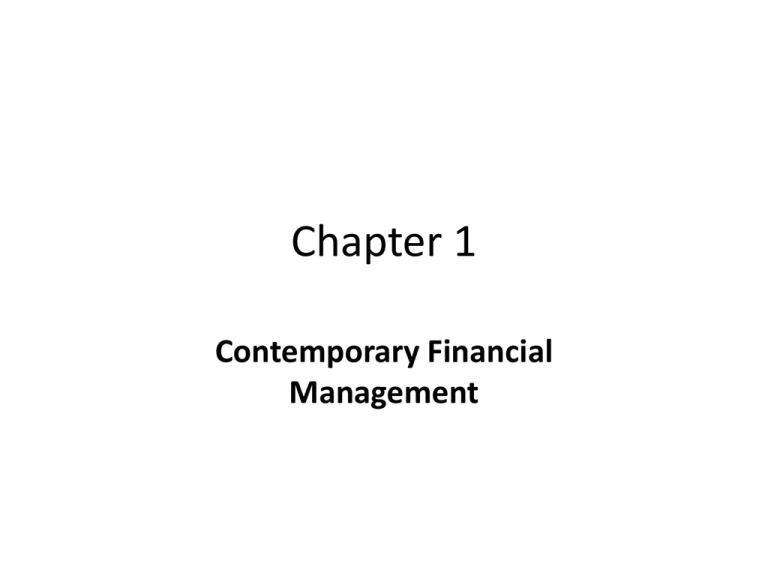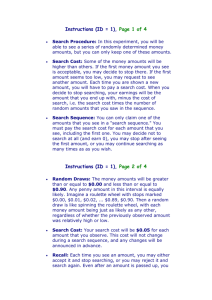Chapter 1
advertisement

Chapter 1 Contemporary Financial Management Revolution of the Finance Function • 1900-1920: Focus on legal issues surrounding capital markets • 1920’s: Corporate expansion, new technologies (e.g TV), and new financial instruments (e.g mutual funds) • Post-1945: Current focus on financial implications of business decisions (i.e. investment, value maximization) Revolution of the Finance Function • Big changes in the 1980s – 2000s – Disinflation – Revolution in telecommunications – Better macroeconomic management – Large-scale asset securitization: cash flows of assets are repackaged and sold to investors through the capital markets – Growth of so-called BRIC countries Revolution of the Finance Function • Major trends that continue to affect corporate financial management: 1. Globalization of business and financial management 2. Fallout from the accounting and financial scandals of the past several years (e.g. Enron, Worldcom). Recent bankruptcies (e.g. Lehman Brothers) are the result of excessive leverage and poor financial management. Revolution of the Finance Function • Critical components of success – Need new framework built on sound financial principles and transparency to gain public trust – Well-informed business decisions based on knowledge of financial management principles and techniques – While there are no rules and regulations that guarantee success… Goals of Financial Management – Maximize the value of firm’s outstanding common stock – Maximize earnings per share (not only total profits) – Timing of increased earnings is important! Must consider the present value of future earnings – Balance between business and financial risk Goals of Financial Management • Business risk: Risk imposed by business environment and economic cycle in which firm operates – Ex. Expected future demand for electricity is less difficult to predict than expected future demand for most high-technology products • Financial risk: Risk imposed by manner in which firm is financed – Ex. The more debt employed, the greater risk of insolvency Goals of Financial Management • Overall objective: – Maximization of earnings per share of common stock subject to consideration of business and financial risk, time of earnings, and impact of dividend policy. Organization and Structure of the Book 1. 2. 3. 4. 5. 6. 7. Introduction Fundamentals of financial accounting Financial analysis Working capital management Long-term investment decisions Long-term financing decisions Special topics – – – Corporate governance and risk management International finance Mergers and acquisitions











